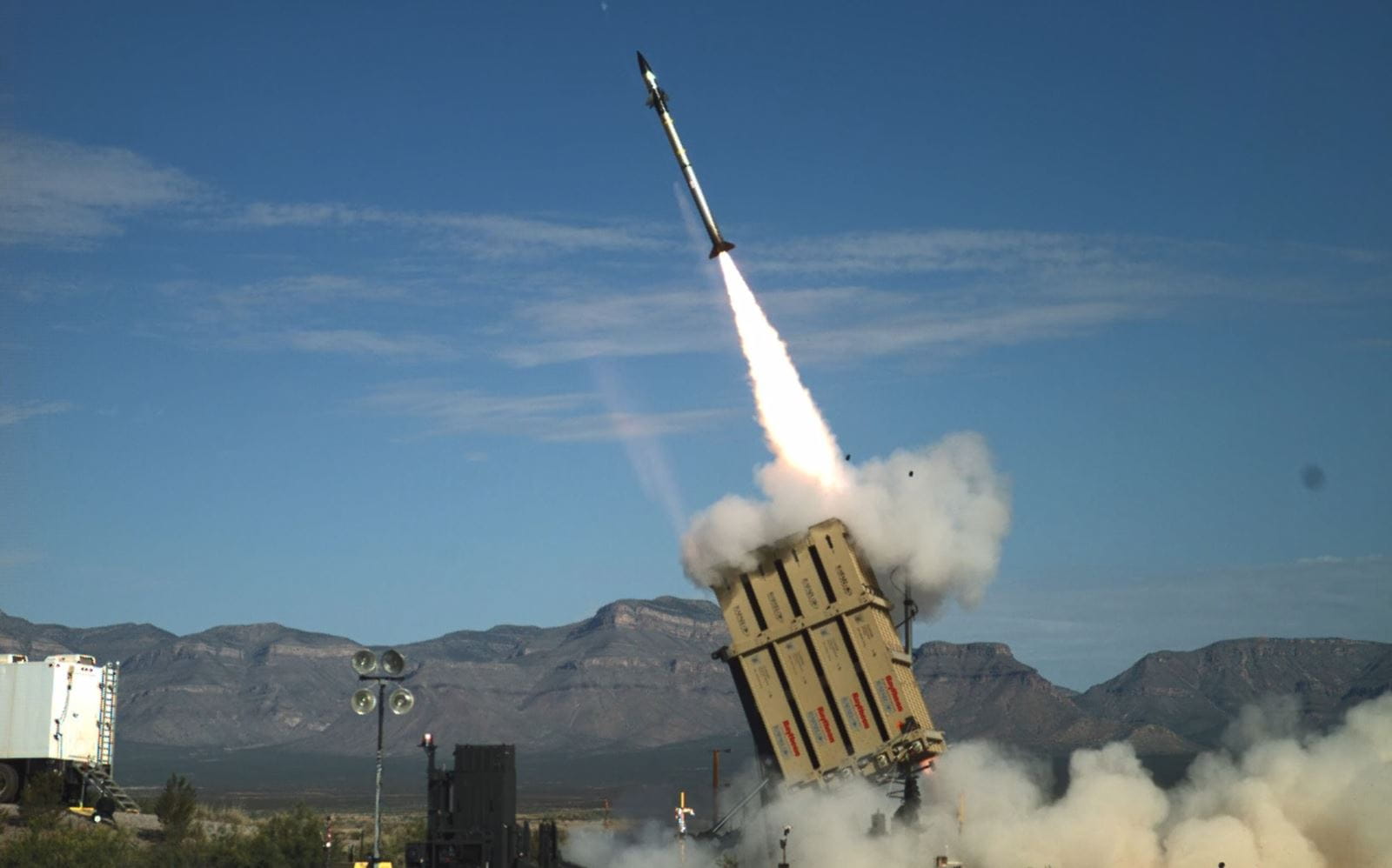
A live-fire test of an initial MRIC prototype in December 2021. (US Marine Corps)
WASHINGTON — Following a trio of live-fire tests that wrapped up last year, the Marine Corps recently approved the next stage of development for a mobile air defense capability based in part on Israel’s famed Iron Dome system, a program official told Breaking Defense.
The Corps’ Milestone Decision Authority met on Dec. 13, 2022 and approved the Medium-Range Intercept Capability (MRIC) program to move forward with the certification process, according to Barbara Hamby, a spokesperson for the USMC Program Executive Officer (PEO) Land Systems.
“A series of activities will take place during fiscal 2023, culminating with a quick reaction assessment… for the MRIC prototype, under the Middle Tier Acquisition Rapid Prototyping framework,” Hamby wrote in an email. “Both the ongoing certification processes and the quick reaction assessment will inform the Milestone Decision Authority on the potential fielding of the MRIC prototype.”
Growing concerns about cruise missile threats have prompted US military leaders to hunt for innovative ways to quickly field new air defenses.
Over the past several years, USMC officials have developed and tested an MRIC prototype that removes the Rafael-made Iron Dome launcher from its heavy base, mounts it on the back of a trailer to fire Tamir missiles, and integrates it with other service capabilities.
Don Kelley, the service’s program manager for ground-based air defense with the Land Systems PEO, previously said the service could field the first battery in early fiscal 2025, and an industry source confirmed that that is still the plan. Ultimately, the service wants to outfit three Marine Air Wings each with an MRIC battery by the end of 2028, the industry source said.
Although the December 2022 acquisition decision is new, USMC leaders’ support for the program is not.
“We held [off] on funding for [MRIC] for almost two years, until you can prove it,” USMC Assistant Commandant Gen. Eric Smith said during a July 2022 event at the Center for Strategic and International Studies. “Now it was proven. Now we start procuring it.”
The four-star general made those comments even before the USMC wrapped up its series of three MRIC live-fire tests in September 2022 when it used the more mobile, expeditionary launcher for the first time against several threats including a maneuvering target.
As for the system, in addition to utilizing the truck-mounted Iron Dome launcher paired with the Tamir interceptors, it also uses the Common Aviation Command-and-Control System (CAC2S) and a mini battle management control (BMC) system for the Tamir missile, along with the AN/TPS-80 Ground/Air Task Oriented Radar (G/ATOR).
RELATED: What is G/ATOR, the Marine Corps’ premier air surveillance radar?
Questions abound about the security of weaving these capabilities together but so far, officials, including Kelley, have said they have not encountered showstopping cybersecurity concerns.
However, the Army has flagged it as a prime concern and said it does not plan to integrate the two Iron Dome batteries it currently has in its inventory into its larger air defense architecture. Instead, it is holding on to the two batteries and has selected Dynetics’ new “Enduring Shield” launcher, paired with Raytheon’s ground-launched AIM-9X Sidewinder missile, for its Indirect Fire Protection Capability Increment 2 (IFPC Inc 2) program over Iron Dome.
Navy jet trainer fleet operations remain paused after engine mishap
One week after the incident, a Navy spokesperson says the service is continuing to assess the fleet’s ability to safely resume flight.


























